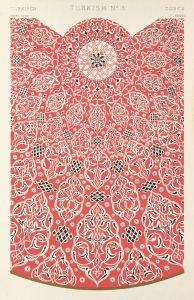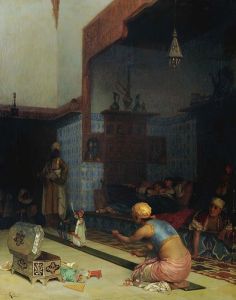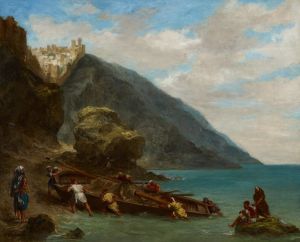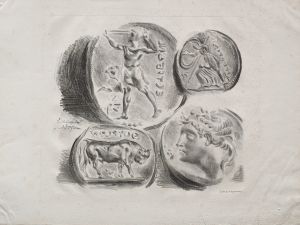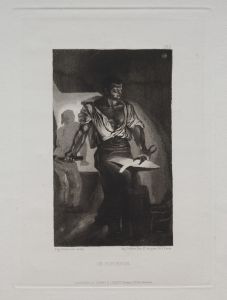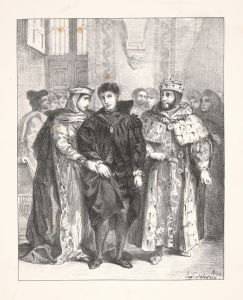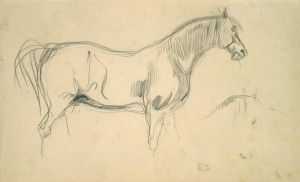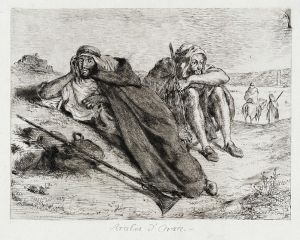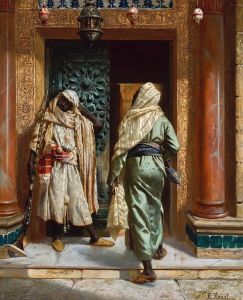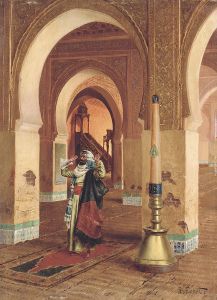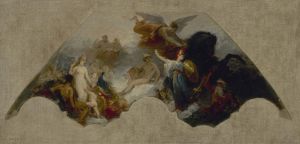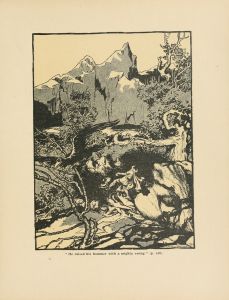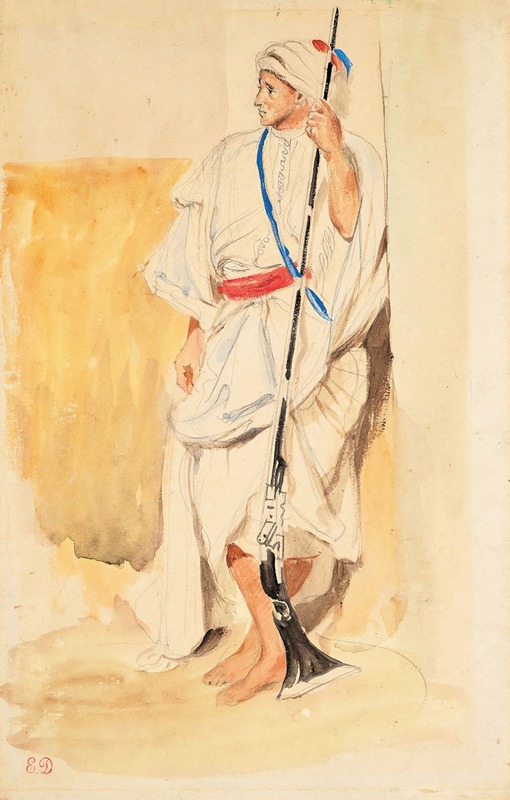
Arabe debout
A hand-painted replica of Eugène Delacroix’s masterpiece Arabe debout, meticulously crafted by professional artists to capture the true essence of the original. Each piece is created with museum-quality canvas and rare mineral pigments, carefully painted by experienced artists with delicate brushstrokes and rich, layered colors to perfectly recreate the texture of the original artwork. Unlike machine-printed reproductions, this hand-painted version brings the painting to life, infused with the artist’s emotions and skill in every stroke. Whether for personal collection or home decoration, it instantly elevates the artistic atmosphere of any space.
Eugène Delacroix, a prominent French Romantic artist, is renowned for his vivid and emotive works that often depict dramatic scenes and figures. Among his many creations, Arabe debout (Standing Arab) is a lesser-known but significant piece that reflects his fascination with North African culture and his mastery of portraiture.
Arabe debout is believed to have been painted during or after Delacroix's journey to North Africa in 1832. This trip, which included visits to Morocco, Algeria, and Spain, had a profound impact on his artistic vision. Delacroix was deeply inspired by the people, landscapes, and vibrant colors of the region, and these influences are evident in many of his works, including Arabe debout. The painting portrays a standing male figure, dressed in traditional North African attire, with a commanding and dignified presence. The subject's posture and expression convey a sense of strength and individuality, characteristics that Delacroix often sought to capture in his depictions of non-European cultures.
The artwork showcases Delacroix's skillful use of color and light, hallmarks of his Romantic style. The rich, warm tones of the figure's clothing and the subtle interplay of light and shadow emphasize the texture and depth of the fabric, as well as the physicality of the subject. Delacroix's attention to detail and his ability to evoke emotion through his brushwork are evident in this piece.
Delacroix's North African works, including Arabe debout, are not merely ethnographic studies but also artistic interpretations that reflect his Romantic ideals. He admired the perceived authenticity and vitality of the cultures he encountered, and his paintings often celebrate the individuality and humanity of his subjects. However, it is important to note that these works were created through the lens of a 19th-century European artist and may not fully represent the complexities of the cultures they depict.
Today, Arabe debout is considered an example of Delacroix's ability to blend his personal experiences with his artistic vision. While it may not be as widely recognized as some of his larger, more dramatic compositions, the painting remains a testament to his fascination with the diversity of human experience and his commitment to capturing it on canvas.
Further details about the specific location of the painting or its current status are not readily available.





